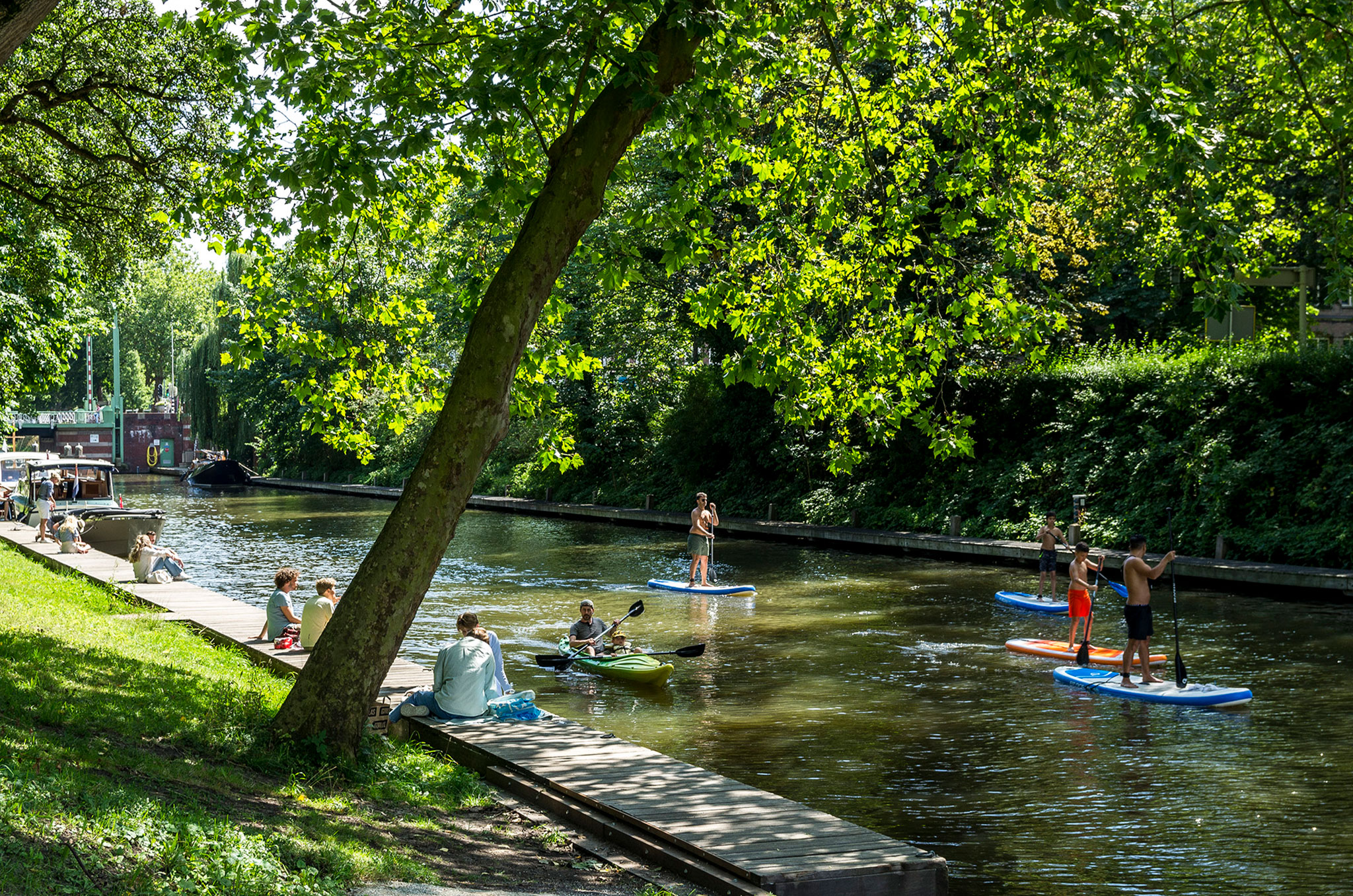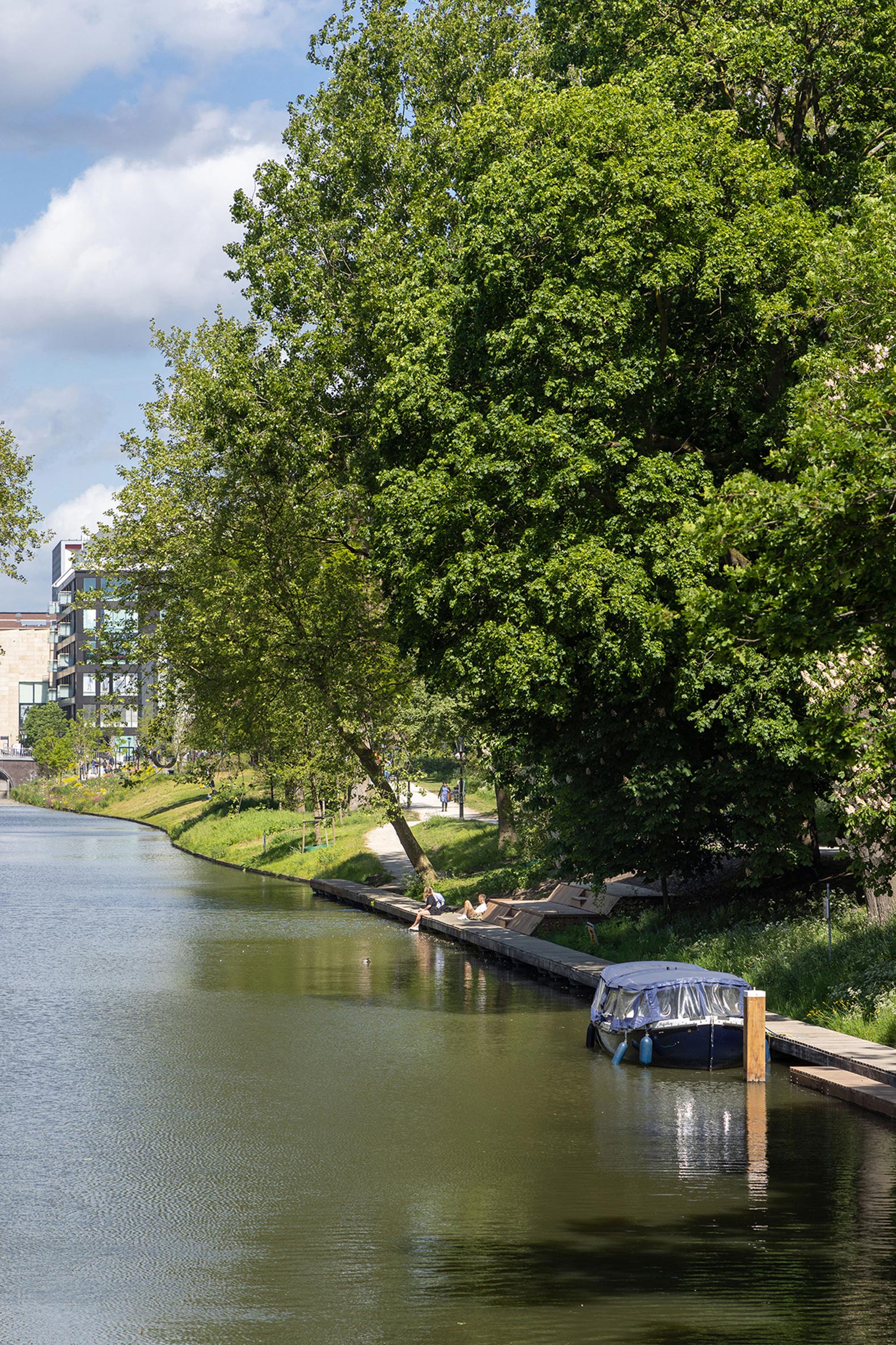The canal is a crucial element in building urban resilience: it increases the city's ability to cope with extreme heat, storms, and flooding. The recovery of water and vegetation contributes to sequestering carbon and reducing pollution while becoming a pleasant space, for relationships with living beings and playful for the residents of the City.
The Jury considers that the intervention is part of a broader urban transformation, which addresses the future by recovering elements of the city's past. The canal has returned to its original state after being replaced for more than fifty years by a large highway. Not only does motorized traffic decrease, but also, most importantly, it prioritizes pedestrian mobility and social interaction, as well as porous surfaces and rich biodiversity. These aspects are what make our cities healthy, sustainable and pleasant. With this award, we recognize the client, the teams and the shareholders and we hope that this project will inspire a new standard for sustainable urban regeneration.

Catharijnesingel by OKRA landscape architects. Photograph courtesy of OKRA.

Catharijnesingel by OKRA landscape architects. Photograph courtesy of OKRA.
The 11th edition of the European Prize for Urban Public Space, an initiative of the Center for Contemporary Culture of Barcelona (CCCB), has had record numbers of participation and a wide representation: a total of 326 projects from 35 different countries.
The European Prize for Urban Public Space is a biennial and honorary competition that, since the year 2000, recognizes the best interventions for the creation, transformation and recovery of public spaces in European cities.
Project description by OKRA landschapsarchitect
The restoration of the last section of the Catharijnesingel includes an area of about 1.1 kilometres in length. A total of about 40,000 cubic meters of water have returned to the channel, and its total length now reaches almost six kilometres.
For the layout of the Catharijnesingel and the extension of the Zocherpark, the OKRA studio has reorganized the traffic that occupied the place, diverting cars and giving priority to pedestrians. The extensive walking route along the canal invites recreational and sports use so that visitors can stroll through meadows among works of art, numerous rest areas and a variety of plantations, each with its own species.
Water recovery is the key aspect of this project and the reason why visitors want to return to the Catharijnesingel. Whether doing aquatic activities or walking along the water's edge, a cultivated area in which the park is reflected, the inhabitants of Utrecht recover in this new space the historical relationship of the city with water and the canal.
A diverse assortment of trees—poplar, plane, prunus, and elm—connects this new park with the existing Zocherpark. In the choice of trees, OKRA has paid a lot of attention to biodiversity, such as single-flowering trees that attract bees and bumblebees. This variety, while improving biodiversity, also offers different experiences for visitors throughout the seasons.
The use of materials – clinker bricks (the ancient Rhine bricks) and gravel – creates a visual connection to the historic city centre of Utrecht. Next to the existing dock, a wooden surface can be used as a seating element, a stand or a stage, and a lower section added to the existing wooden surface is used by canoeists, paddle boarders and other recreational boats.





































